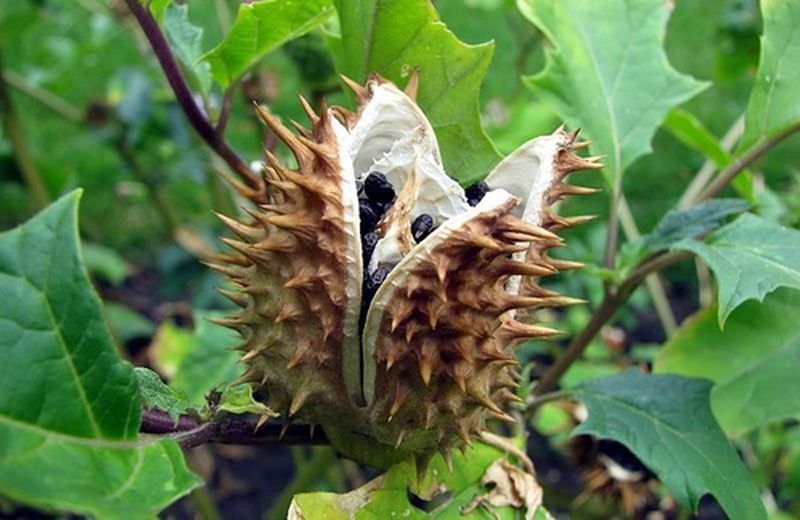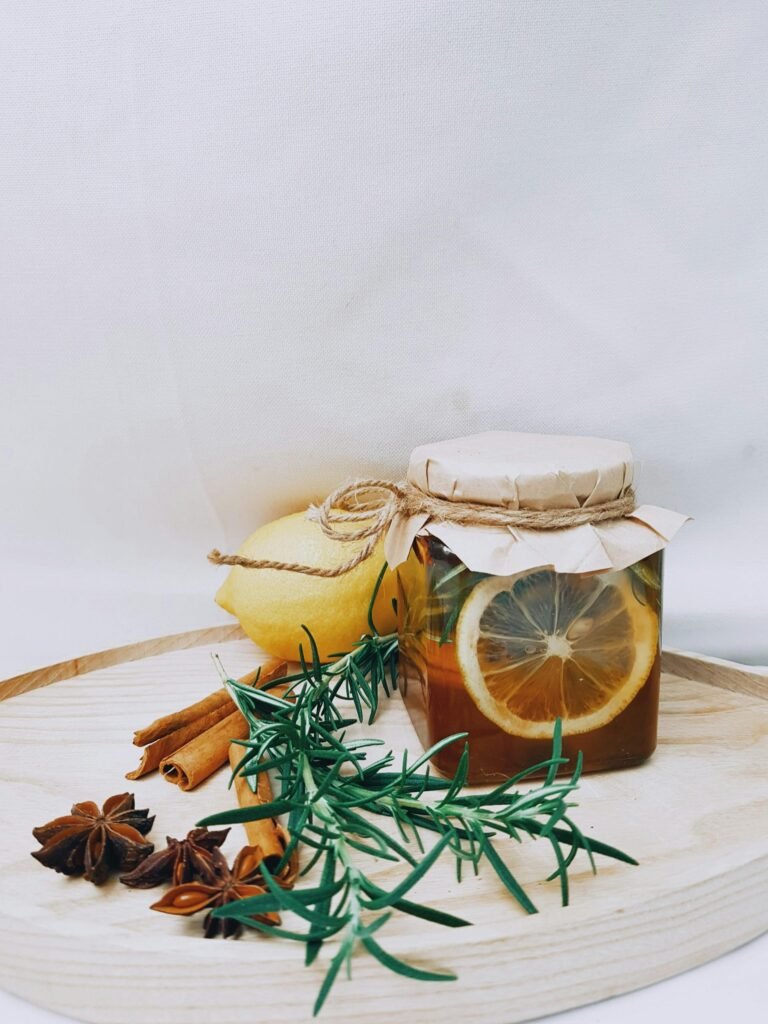The plants of Capricorn
Capricorn plants help relieve physical suffering, such as anti-inflammatory ones for bones; and they are a consolation in enduring loneliness and melancholy, because they are influenced by Saturn, the planet of mental abstraction, isolation and introversion

The plants of Capricorn are those that fall under the influence of Saturn , like the funereal cypress; the badger , whose wood was used by Macbeth’s witches for evil filters ; and the black alder , which grows beside the waters, the secret home of the elves. The poisonous solinaceae also belong to the planet that governs the Sign, such as mandrake and stramonium , hellebore , aconite and hemlock; and finally the devil’s claw, one of the plants with analgesic and anti-inflammatory action of the osteoarticular system.
According to the Ancients, four elements made up all things existing in nature: air , water , earth , and fire . In particular for the medicine of that period, the earth possessed the qualities of cold and dryness and corresponded to the mood of black bile, which if in excess, produced the melancholy temperament .
In fact, in ancient times, in order to cure diseases, the correspondences between plants and planets were taken into account ; and the Theory of Signatures was used , for the recognition of plant remedies to be associated with an organ , by virtue of the fact that each plant reported in the shape , color or flavor an imprint (“sign”) of its link with a anatomical part and with a planet. According to this system, herbs and medicinal plants would have the qualities of the planet that governed them and would be used to heal the organ associated with them. And to melancholy or black bile, plants with black fruits corresponded , (because black is associated with Saturn) or that resembled a skeleton or bones (anatomical part associated with Capricorn).
In fact, anatomically the sign is associated with the skeleton , cartilage , teeth , knees, joints, skin, nails, gall bladder. The pathologies that natives can face are: dental disorders , joint pain , arthritis , arthrosis , rheumatism, demineralization , skin diseases and anemia .
Want to know what 2018 will be like for Capricorn? Find out here!
The plants of Capricorn and the planet Saturn
Capricorn corresponds to the first sign of winter , feminine , cardinal (that is, presiding over the beginning of a season), whose element is the Earth , the frozen and barren one , of the darkest and coldest phase of the year. Nature is immersed in a lethargic sleep, but under the hard bark of the ground, the seed planted in the Scorpio period is sprouting, hidden from view , in the womb of the earth, under the protective blanket of ice and snow. As soon as the Sun enters the Capricorn Sign, the Winter Solstice takes place in which everything gives the idea of adead , crystallized world ; and coldness , detachment , pessimism , inability to express feelings and emotions, have always been the accusations made against the natives. In the evolutionary cycle of man, Capricorn is the atonement , the ascent to higher values , the acceptance of destiny , the maximum abstraction , the supreme detachment from instincts and passions. In the psychic process it indicates the concentration of energies in view of a goal , the inner discipline , the sense of responsibility .
Natives like the winter land appear cold , rigid, rarely betray anxieties or emotions, they limit themselves to showing their feelings, for fear of being hurt. However, those who can scratch and penetrate their armor of apparent impassivity can discover treasures of wisdom, depth of feeling and a great need for human warmth . The natives have a strong and determined character , equipped with all the qualities and defects that the Earth element gives : they seek stability and security; and work, concrete achievements are the cornerstones on which their existence revolves.
Like the austere season in which they are born, they are often suspicious and critical , extremely selective; and often the rigor and seriousness with which they live each experience can have a repelling effect on others, and for this reason they risk isolating themselves or remaining isolated . Deep down, Capricorns want company; but loneliness is accepted as an inevitable companion and they do not complain about it.
The influence of Saturn makes them very capable of translating thoughts into words, but blocks them when it comes to expressing feelings , emotions ; on the contrary, the more excited they are, the more emotionally involved, the more they close themselves in hermetic mutisms . Prisoners of themselves , they hope that someone has the will and the strength to pierce their armor and enter into communication. Closures and difficulties in communicating derive not only from restraint and shyness , but also from the memory of all the wounds suffered in childhoodfor their unfriendly, enigmatic and all too responsible attitude: often in this phase of life, they are forced to take on (or to see themselves carried) responsibilities and family burdens too great for their age. Seldom has a Capricorn had a happy childhood; at best, he felt unprotected and unloved enough and quickly realized he had to provide for himself alone . Saturn, the principle of concentration , conservation , isolation , detachment , loneliness , introversion , has some characteristicscoldness , slowness , heaviness , austerity . The planet requires a long time , does not promise the easy way and does not give dazzling successes, if not at the cost of constant effort .
The graphic of the sign , of Egyptian and Chaldean origin, is a stylization of the image of the mythical animal that represents the sign; the goat with fish tail . The goat, a land animal, symbolizes the climb to the top of the mountain , solitude; the fish symbol of rebirth , purification , spirituality . Saturn, severe god, destroyer, represents power, ambition, the absence of passions and heat , but is also associated with maturity and the conquest of wisdom, through the trials of life.. Thus the natives know how to engage in their initiatives with impressive tenacity and there is no obstacle in front of which they are willing to give in: theirs is the tactics of patient expectations , of the cold realism that allows us to accept every more complex situation, and of actions. radicals carried out with determination.
The strong ambition that characterizes them makes them rich in perseverance and constructive skills . Intellectively very gifted, they are based almost exclusively on what they know and express themselves above all through actions , which they perform with constancy and effort which they never escape. They are reliable people , they keep their word, even if they have to make sacrifices, provided that these of course are aimed at specific purposes. They expect the same things from others and this generates serious relational problems.
The plants of Capricorn
Much wisdom, much trouble; whoever increases knowledge increases pain . (Ecclesiastes 1:18)
In ancient times the plants associated with Capricorn were the toxic ones , with black berries (color signature), which thanks to their psychotropic and amazing action favored mental abstraction or consoled in a condition of loneliness and sadness ; and those that helped to put an end to this condition, that is, the poisonous, death-causing ones. Others helped to soothe and relieve painful bones and joints due to their analgesic and anti- inflammatory action.directed to the osteoarticular system, which recalled the shape (signature), the human skeleton or parts of it.
- Datura Stramonio: the names devil’s herb and witches’ herb refer to its narcotic , sedative and hallucinogenic properties , used both for therapeutic purposes and in the magical-spiritual rituals of shamans and in medieval potions. In fact, it contains the alkaloids, scopolamine and atropine. The use of Datura for this type of purpose is extremely dangerous as the active dose of these substances is very close to the fatal dose . In ancient times it was often used for suicide and murder. It belongs to the Solanaceae family, a dicotyledonous angiosperm family that includes many edible species. The lethal species of this family in fact have psychoactive alkaloid components, including the toxic alkaloid solanine , in the still unripe fruits , which disappears or transforms into other substances, harmless or healthy, when the fruit becomes ripe. Among the best known plants belonging to the family we find plants that are important for human nutrition ( potatoes , aubergines, tomatoes , chilli pepper , pepper); and plants from which pharmaceutical drugs are obtained poisonous plants such as belladonna, the mandrake or the Datura.
- The willow : its branches hang languidly , even reaching the ground and thus giving the tree an appearance of great depression . It isolates itself from other trees because it needs to have its roots on each side of the water. The bark of the willow branches, 2-3 years old, contains phenolic glycosides (salicin, populin, salicylic alcohol); aldehydes ; aromatic acids ; flavonoids (isoquercetin); and tannins . Salicin is the main active ingredient of the plant due to its analgesic properties , antipyretic and antirheumatic . For these actions the willow is used as an anti- inflammatory , anti- neuralgia, antifebrile , useful in case of rheumatism; joint and muscle pain , back pain ; neuralgia; headache ; fever ; colds. The therapeutic virtues of the willow bark have been known since ancient times, and it is mentioned in the writings of I ppocrates ; of Dioscorides and Pliny, in the 1st century AD for the propertiesfebrifuges and analgesics . In the Middle Ages the pharmacological use is progressively losing, given the high flexibility of the young branches , which are used for the manufacture of baskets. The Salerno Medical School (from the Norman period, up to the first half of the 13th century) attributes anaphrodisiac properties to the willow , given its ability to ” extinguish the heat ” and curb the libido .
- Equisetum : the name equisetum properly means “horse’s tail or hair” and has been used for therapeutic purposes since Roman and Greek antiquity. Horsetail is also known as “vegetable clay” due to its mineral composition and its properties. The active ingredients present are: silica (10% passes as silicic acid in herbal teas), calcium , magnesium , potassium , saponin (equisetonin), flavonic glycosides, small amounts of alkaloids and tannins. Due to the presence of these mineral salts, in a molecular form highly available to our body, horsetail contributes to“metabolism of the bone” and favors the remineralization of the osteo-articular system and of the tissues such as nails and hair and cartilage. Its intake is therefore indicated in case of nail fragility , hair loss , alopecia , osteoporosis , skeletal growth of adolescents , after-effects of fractures , arthrosis (thanks to the action it exerts both on the articular cartilage and on the bone tissue) and tendinitis (improves the elasticity of the tendons).
























+ There are no comments
Add yours